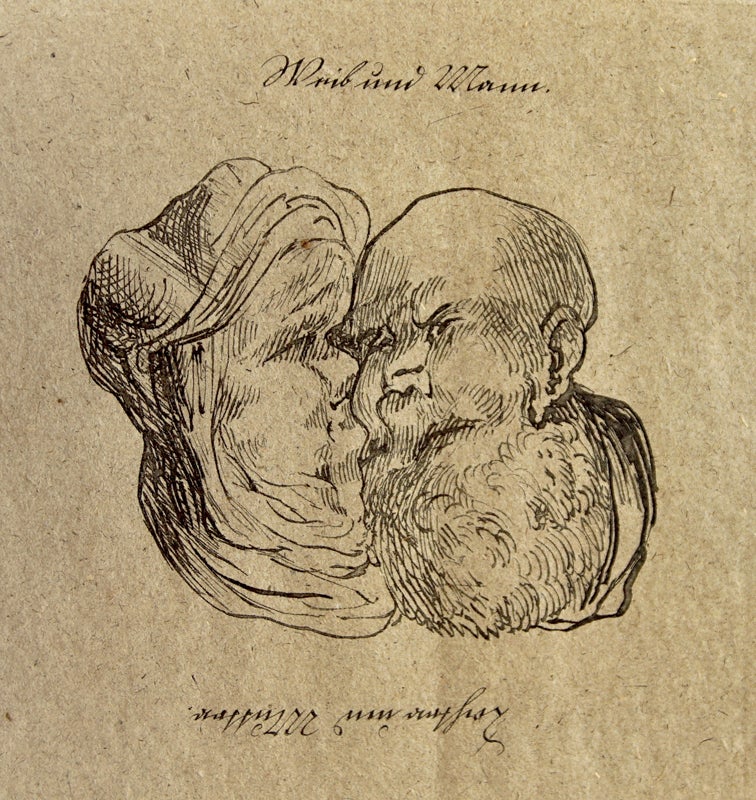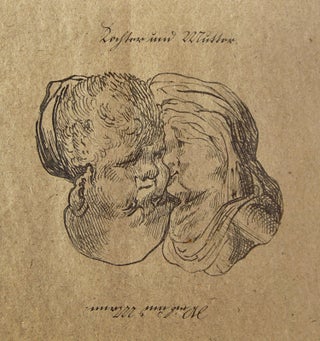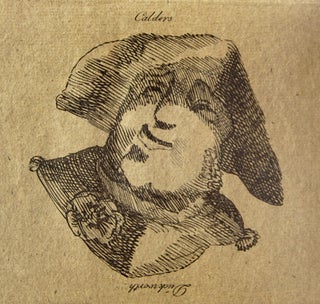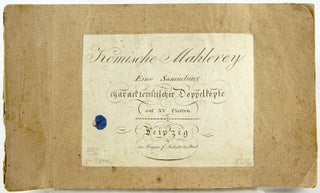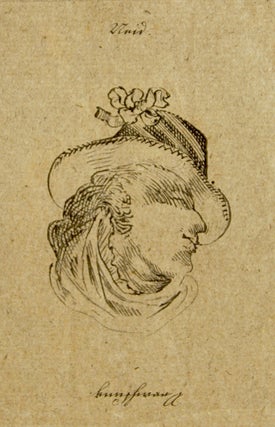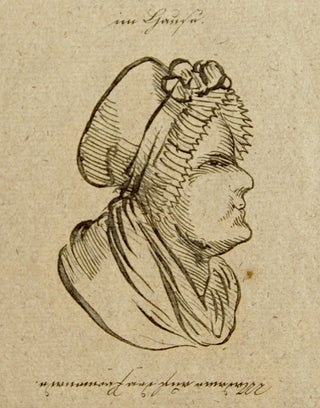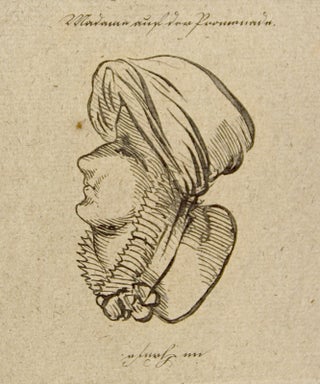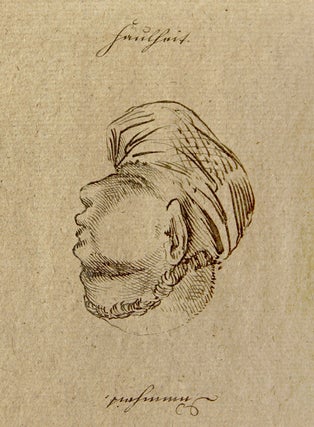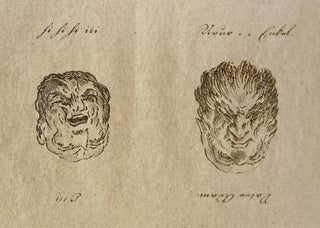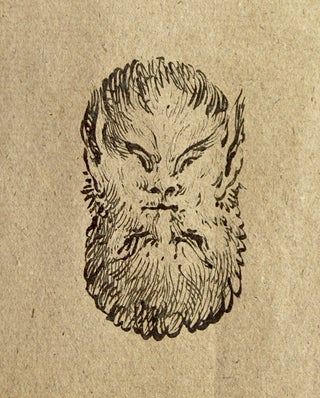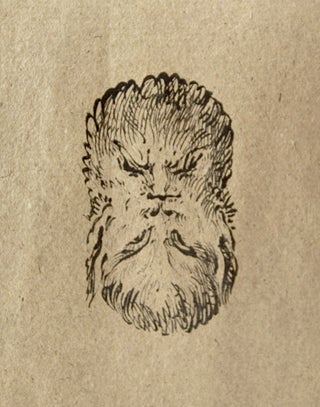Komische Mahlerey: Eine Sammlung Characteristischer Doppelköpfe auf XV Platten.
Leipzig: Magazin für Industrie und Literatur, (c. 1816). Oblong octavo. 15ff. Komische Mahlerey, or "Funny Paintings," is a book of "reversible faces," containing fifteen etchings which become different characters when viewed right-side up or upside-down. Both sides of the image are labeled in German, and the two faces are often revealed to contrast with or comment on each other: a woman as she looks at home versus when she is made up to go out; a hermit juxtaposed with a night owl; and stupidity together with idleness. One set of faces has the same label for both sides—"Der Sänger em Hof" or "The singer in the yard"—which is revealed to be both a man singing and a rooster. Another set consists of portraits of two British admirals, Sir John Duckworth and Sir Robert Calder, both of whom served during the conflicts of the late 18th century, including the American and French Revolutions and the Napoleonic Wars. Two leaves have more than one set of reversible faces, and the images on the last two leaves are unlabeled, perhaps leaving it up to the viewer to determine how the sides relate to each other. This type of visual illusion has been explored since at least the 16th century, when Milanese artist Giuseppe Arcimboldo created paintings that, when viewed one way, appeared to be a bowl of fruit, but when turned upside down, revealed a human face. Others expanded on this idea, juxtaposing words and ideas for satirical or political effect so that, during the Reformation, an image of the Pope might be combined with the Devil or a Cardinal might be linked to madness. Bound in original wrappers with title label to front cover. Near fine, with general soiling and wear, showing some loss to paper at spine, not affecting the stability of the binding. A rare complete example of an ephemeral collection, not listed in WorldCat. Item #29946
Price: $7,500.00


